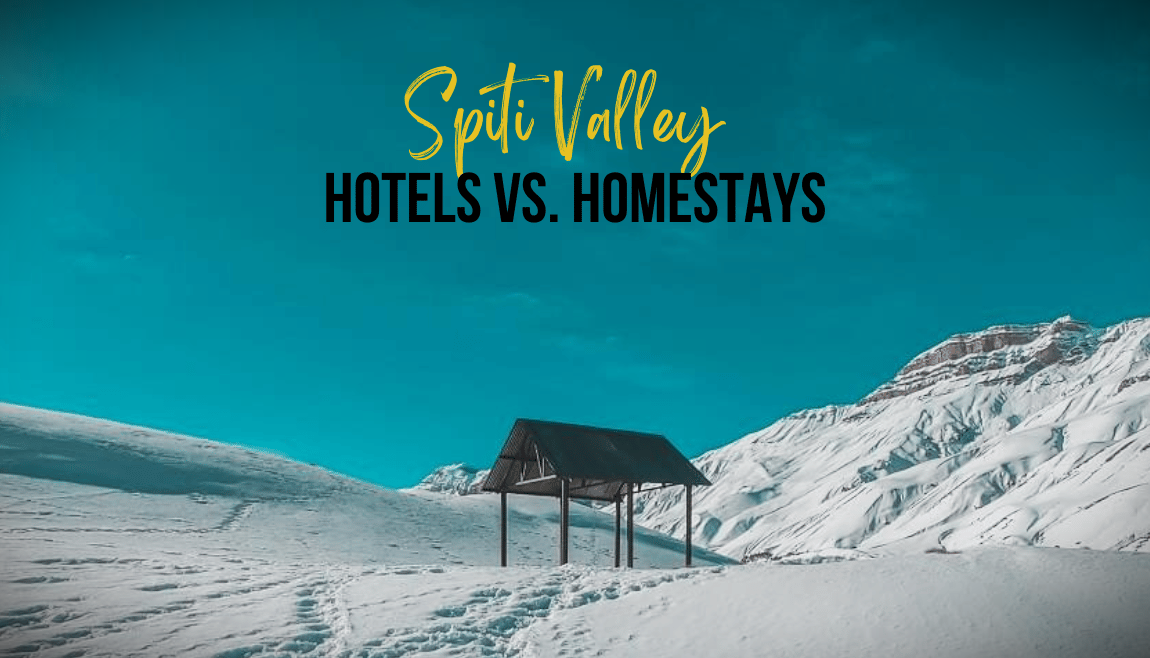 9th December 2024
9th December 2024
Planning a trip to Spiti Valley, with its breathtaking landscapes and rich cultural heritage, involves making thoughtful decisions—especially when it comes to accommodation. Spiti’s high-altitude cold desert, nestled in Himachal Pradesh, provides an unparalleled experience, but your choice between homestays and hotels plays a significant role in shaping your journey. Whether you’re embarking on a thrilling bike trip, enjoying a family getaway, or exploring as a backpacker, this guide will help you decide what’s best for your needs.
Hotels: These are commercial accommodations providing professional services and a range of amenities like private rooms, dining options, and sometimes luxury facilities.
Homestays focus on authenticity and community, while hotels emphasize comfort and convenience.
Spiti Valley’s weather varies dramatically by season:
Summer (May–September): Pleasant weather with temperatures ranging from 10°C to 25°C. Most accessible season for travel.
Monsoon (July–August): Minimal rainfall but increased risk of landslides in surrounding regions.
Winter (November–March): Extremely cold, with temperatures dropping to -30°C. Roads may be blocked due to heavy snowfall.
The weather impacts your choice of accommodation. Winters demand heated rooms, while summers allow for basic stays.
In winter, choose well-insulated hotels with heating facilities. Many homestays also close during harsh winters.
In summer, homestays thrive, offering access to remote villages. Hotels are readily available too.
Travel Tips:
Always check if heating or electric backup is available during cold months.
Roads to Spiti from Manali or Shimla might be blocked during winter and early spring.
Common Features of Hotels and Homestays:
Local Cuisine: Both offer traditional Spitian dishes like thukpa, momos, and butter tea.
Scenic Views: Whether you choose a hotel or homestay, stunning vistas of the mountains and valleys are almost guaranteed.
Warm Hospitality: Expect friendly and welcoming hosts in both options.
Advantages:
Comfort: Private bathrooms, heating, and room service.
Location: Often situated in accessible areas like Kaza or Tabo.
Amenities: Reliable electricity, Wi-Fi, and parking.
Challenges:
Can be more expensive compared to homestays.
Advantages:
Authentic Experience: Cultural immersion and homemade meals.
Affordability: Generally cheaper than hotels.
Remote Access: Located in picturesque villages like Langza, Kibber, and Komic.
Challenges:
Basic Facilities: Shared bathrooms, limited heating, and electricity.
Accessibility: Homestays in remote villages may be harder to reach.
Langza: Known for fossil hunting and stunning Himalayan views.
Kibber: Great for wildlife enthusiasts and trekkers.
Komic: One of the world’s highest villages, offering a surreal experience.
Key Tips for Staying in Spiti:
Acclimatization: Spiti’s high altitude can cause Acute Mountain Sickness (AMS). Rest for a day to adapt.
Pack Smart: Carry thermal wear, power banks, and medications.
Respect Local Customs: Remove shoes before entering homes and ask for permission before taking photos.
Connectivity: Mobile networks are limited; BSNL and Jio work best.
Q1: Do homestays have attached bathrooms?
A: Not all homestays provide attached bathrooms. Confirm with your host beforehand.
Q2: Which months are best for visiting Spiti?
A: May to September is ideal for clear roads and pleasant weather.
Q3: Is electricity and Wi-Fi reliable in Spiti?
A: Electricity can be erratic, and Wi-Fi is available in hotels but often slow.
Q4: Can I visit Spiti in winter?
A: Yes, but it’s challenging due to extreme cold and road closures. Only select accommodations operate during winter.
Q5: How do I book a homestay?
A: Many homestays can be booked through local travel agencies or directly on arrival in Spiti villa
Choosing the right accommodation ensures you not only enjoy Spiti’s breathtaking beauty but also experience its rich culture in comfort and style.
 Chat Now
Chat Now